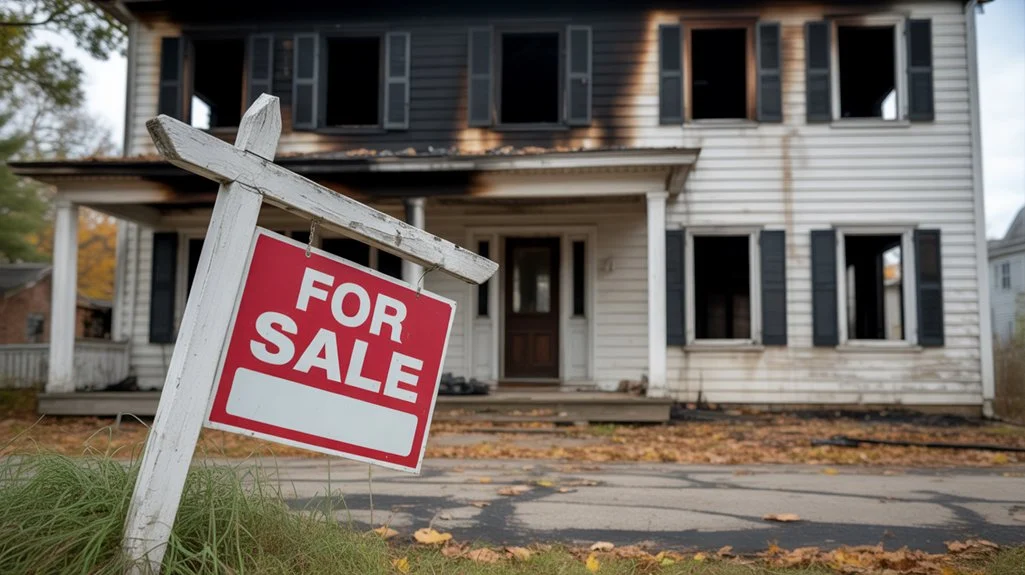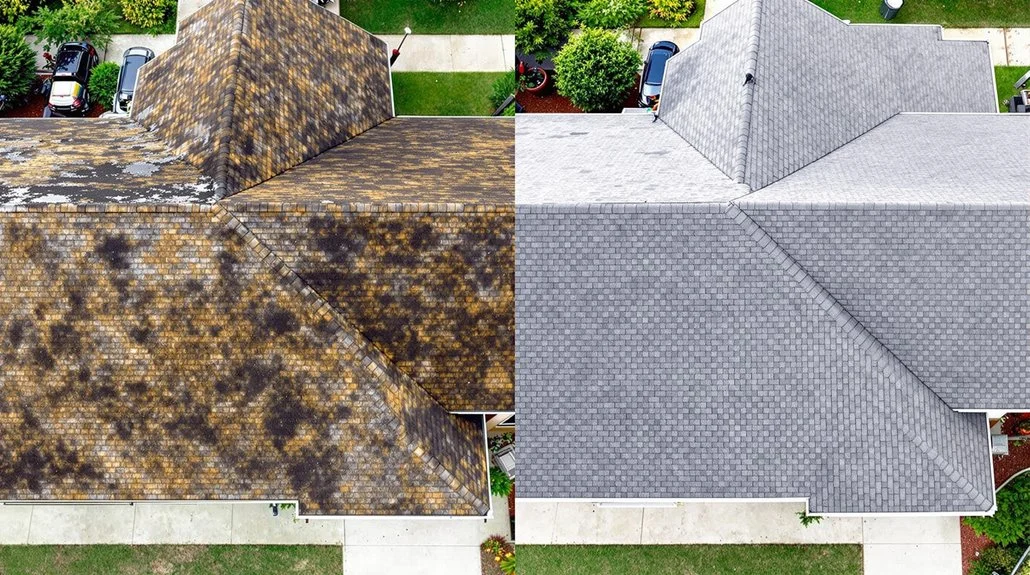When Michael J. from Chicago, IL received his second foreclosure notice, he had just 60 days before losing his family home and felt overwhelmed by the complex options ahead.
Better House Buyers stepped in with a straightforward cash offer within 24 hours, eliminating the uncertainty of loan modifications, short sales, and lengthy bankruptcy proceedings that typically plague homeowners in pre-foreclosure.
The company’s ability to close on Michael’s preferred timeline meant he could avoid the devastating credit impact of foreclosure while walking away with cash in hand.
Rather than spending months navigating traditional pre-foreclosure options with uncertain outcomes, Michael discovered a solution that resolved his situation in weeks, not years.
Key Points
- Cure the default by paying all overdue amounts, fees, and penalties within 90 days of receiving the Notice of Default.
- Negotiate with your lender for loan modifications, refinancing, or forbearance agreements to restructure payment terms and avoid foreclosure.
- Pursue a short sale to sell your home for less than owed while maintaining control over the process and minimizing credit damage.
- File for bankruptcy to immediately stop foreclosure proceedings and potentially restructure missed payments through Chapter 13 or eliminate other debts.
- Sell quickly for cash to meet foreclosure deadlines, with closings possible in as little as seven days without financing delays.
Understanding Your Pre-Foreclosure Timeline and Rights
When you’re facing pre-foreclosure, understanding your timeline and rights isn’t just helpful—it’s vital for making informed decisions that could save your home or protect your financial future.
Your pre foreclosure timeline typically begins after missing three consecutive mortgage payments. The lender then issues a Notice of Default, officially starting the process. Federal law usually requires lenders to wait 120 days before beginning foreclosure proceedings, giving you significant time to act.
During this period, your borrower rights are still strong. You can stay in your home, negotiate loan modifications, request mediation, or sell the property. You’ll receive important notices like the Notice of Intention to Foreclose, which comes 30 to 180 days before any lawsuit filing. If you live in a property with four or fewer units, you have a 90-day period to cure the default and bring your mortgage current.
Knowledge is power—use this time wisely to explore every available option.
Curing the Default by Bringing Your Loan Current
Now that you understand your timeline and rights, let’s focus on the most direct path to stopping foreclosure: bringing your loan current. You typically have 90 days after receiving your notice of default to cure it completely. This means paying everything you owe—past-due principal, interest, fees, and penalties.
| Method | Timeline | Requirements |
|---|---|---|
| Full Payment | Immediate | All overdue amounts plus fees |
| Refinancing | 30-60 days | Decent credit, stable income |
| Loan Modification | 60-90 days | Lender approval, hardship proof |
| Forbearance | 30-45 days | Payment plan agreement |
| Chapter 13 Bankruptcy | Immediate halt | Legal filing, repayment plan |
Smart payment strategies can help you avoid severe default consequences. Contact your lender immediately—they’re often willing to work with proactive borrowers who demonstrate genuine commitment to resolving the situation. If the default cannot be cured within the 90-day period, the lender may issue a Notice of Trustees Sale to proceed with the foreclosure auction.
Negotiating a Loan Modification With Your Lender

How can you transform your foreclosure crisis into a manageable payment plan that works for your budget? Negotiating a loan modification with your lender offers real loan modification benefits that can save your home and financial future.
Start by contacting your servicer immediately—you’ll need at least 45 days before your foreclosure sale. Effective negotiation strategies include gathering complete financial documentation, clearly explaining your hardship, and understanding your rights under federal dual-tracking protections. Additionally, being aware of homeowner rights is essential to ensure you’re fully informed throughout the modification process.
Your lender can reduce monthly payments, extend loan terms, or lower interest rates. Remember, you’re protected from foreclosure while your application’s pending. Don’t navigate this alone—early communication dramatically improves your chances. Legal assistance helps maximize your modification approval odds and guarantees you’re leveraging every available protection. A completed loss mitigation application must be submitted to the lender as part of the formal modification process.
Exploring Short Sale as an Alternative to Foreclosure
Although foreclosure might seem inevitable, a short sale can provide you with a strong alternative that puts you back in the driver’s seat of your financial future. With a short sale, you maintain control over the process while avoiding the devastating blow of foreclosure on your credit report. Additionally, understanding foreclosure consequences can help you make informed decisions during this challenging time.
| Short Sale Benefits | Foreclosure Impact |
|---|---|
| Timeline Control | You choose when to sell vs. court-mandated schedule |
| Credit Recovery | 2-4 years to qualify for new loans vs. up to 7 years |
| Process Control | You select agents and approve offers vs. no control |
| Future Housing | Better rental/mortgage prospects vs. severe limitations |
Through strategic lender negotiations, you’ll work directly with your bank to accept less than what you owe. This collaborative approach protects your financial freedom and opens doors for your next chapter. You must provide financial hardship documentation to qualify for a short sale, demonstrating to your lender that your current circumstances prevent you from meeting your mortgage obligations.
Considering a Deed in Lieu of Foreclosure

When foreclosure threatens your home and traditional selling options feel out of reach, a deed in lieu of foreclosure offers you a direct path to transfer your property back to your lender and walk away from your mortgage debt. This voluntary agreement lets you surrender ownership while avoiding the public legal battle of foreclosure proceedings.
The deed benefits include reduced credit damage compared to formal foreclosure and elimination of costly legal fees. You’ll skip the lengthy court process and protect your privacy from public records. Understanding your borrower rights is essential—you can negotiate terms like full debt release and avoid deficiency judgments.
However, your lender must approve this option, and you’ll need a clean title without secondary liens. Consider consulting legal counsel to protect your interests.
Using Bankruptcy Protection to Stop Foreclosure Proceedings
Facing imminent foreclosure doesn’t mean you’re out of options—bankruptcy protection can serve as a significant legal shield that immediately stops foreclosure proceedings in their tracks. When you file for bankruptcy, an automatic stay kicks in instantly, halting lender collection efforts for three to four months. This breathing room is essential for exploring foreclosure alternatives.
Chapter 13 bankruptcy offers the most robust protection, letting you restructure missed payments into a manageable 3-5 year plan. You’ll gain access to court-supervised mortgage modifications that force lenders to negotiate fairly. Chapter 7 provides shorter-term relief but eliminates other debts, freeing up income for mortgage payments.
Understanding bankruptcy implications helps you make informed decisions. While repeated filings may limit protection, strategic bankruptcy filing gives you strong leverage to regain control of your financial future.
Working With Your Mortgage Servicer for Forbearance Options
If you’re struggling with mortgage payments, reaching out to your servicer for forbearance could be the lifeline that saves your home from foreclosure. Your mortgage servicer must respond to forbearance requests within 10 business days and can’t charge fees for this relief. Forbearance options typically include 180-day payment pauses or reductions, giving you breathing room to stabilize your finances.
| Forbearance Type | Duration | Best For |
|---|---|---|
| Payment Pause | Up to 180 days | Temporary income loss |
| Reduced Payments | 3-6 months | Partial income reduction |
| Extended Timeline | Varies | Long-term hardship |
Don’t wait until foreclosure notices arrive. Contact your servicer immediately, explain your situation honestly, and ask about available programs. If denied, they must provide specific reasons. Remember, you’re fighting for your financial freedom – forbearance gives you time to recover and keep your home.
Evaluating the Financial and Credit Impact of Each Option
Understanding the financial and credit consequences of each pre-foreclosure option empowers you to make the smartest decision for your future. Each path carries different implications for your credit score and financial recovery.
Foreclosure devastates your credit for seven years and often results in deficiency judgments. Loan modifications and repayment plans typically cause less credit damage while keeping you in your home, but they require consistent payments moving forward.
Selling your home during pre-foreclosure—even below market value—usually protects your credit better than foreclosure. Short sales still impact your score but less severely than foreclosure.
Consider how each option affects your long-term financial planning and credit repair timeline. The choice you make today determines how quickly you’ll rebuild your financial freedom tomorrow.
Legal Requirements and State-Specific Foreclosure Laws
When foreclosure proceedings begin, state laws dictate exactly how the process unfolds—and these rules can dramatically impact your available options and timeline for action. Your lender must follow strict legal requirements for borrower communication, including issuing a Notice of Default after 90-120 days of missed payments. This critical pre foreclosure documentation gives you specific timeframes to cure your default—typically 90 days in most states.
The rules vary dramatically by location. Some states require judicial oversight, extending your timeline, while others allow faster non-judicial processes. Your lender must provide clear information about resolving defaults, deadlines, and consequences. They’re also required to inform you about alternatives like loan modifications or short sales. Understanding your state’s specific requirements gives you power to navigate this process strategically and protect your interests.
Making the Right Decision for Your Financial Future
Facing foreclosure doesn’t mean you’re out of options—it means you need to act decisively to protect your financial future. Effective financial planning and debt management start with evaluating each alternative against your specific circumstances. Consider your timeline, financial resources, and long-term goals.
| Option | Timeline | Credit Impact |
|---|---|---|
| Loan Modification | 30-90 days | Minimal to moderate |
| Short Sale | 60-120 days | Moderate |
| Cash Sale | 7-30 days | None |
Don’t let fear paralyze you. Whether you choose loan modification, bankruptcy protection, or selling to a cash buyer, taking action preserves more options than waiting. Your financial future depends on making informed decisions quickly. Consult professionals, compare alternatives, and choose the path that aligns with your goals and circumstances.
Our Hassle-Free Cash Buying Process

Getting cash for your pre-foreclosure home doesn’t have to be complicated or stressful. Our streamlined three-step process eliminates the uncertainty and delays that come with traditional real estate sales, giving you the speed and certainty you need during this challenging time. Here’s exactly how we make selling your house fast and simple.
Step 1: Tell Us About Your Property
Why struggle through the complexities of pre-foreclosure paperwork when you can simplify everything with one straightforward conversation? We’ve streamlined the entire process to respect your time and urgency.
When you contact Better House Buyers, you’ll share basic details about your property – location, condition, and timeline. Our property assessment focuses on understanding your unique situation rather than creating additional stress. We recognize that seller motivation varies, whether you’re facing foreclosure deadlines, inheriting an unwanted property, or dealing with extensive repairs.
This initial step takes minutes, not hours. You won’t need appraisals, inspections, or lengthy documentation. We handle the research and verification behind the scenes. Your honesty about the property’s condition helps us provide the most accurate cash offer possible, setting the foundation for a swift, transparent transaction.
– You submit your information through a simple form or a quick phone call
Two simple options put you in direct contact with our cash buying team, and both take less time than brewing your morning coffee.
Fill out our straightforward online form with your property details – address, condition, and mortgage status. This gives us everything we need to assess your situation quickly. Prefer talking? Call us directly for immediate, efficient communication that cuts through the noise.
These cash buyer options are designed for speed when you’re facing pre foreclosure strategies that matter. You’ll get an immediate response, not weeks of waiting. Share accurate information about your property’s condition and mortgage situation, and we’ll generate a fair cash offer fast.
This initial contact commits you to nothing but opens the door to freedom from foreclosure stress.
Step 2: Get a Fair Cash Offer
How quickly can you turn your pre-foreclosure stress into relief? Within 24-48 hours, you’ll receive our fair cash offer that could change everything. No waiting months for traditional buyers or dealing with financing headaches.
Our cash offer benefits include purchasing your home as-is, covering closing costs, and closing on your timeline. You’ll avoid foreclosure’s credit damage while walking away with money in your pocket. We handle all the paperwork and complications.
Our fair valuation criteria consider your property’s true market value, repair costs, and current conditions. We’re not here to lowball you—we’re here to provide a legitimate solution that works for both parties. You’ll get a transparent breakdown showing exactly how we calculated your offer, giving you the freedom to make an informed decision quickly.
– We’ll quickly assess your property and present a no-obligation cash offer
Within 24 hours of your initial contact, our experienced team begins a thorough yet streamlined assessment of your property that cuts through the confusion of pre-foreclosure proceedings. We’ll review current market trends and conduct a detailed property valuation to determine exactly what your home’s worth in today’s market.
| Traditional Sale | Our Cash Process |
|---|---|
| 30-60 days assessment | 24-48 hours assessment |
| Requires repairs/staging | Buy as-is condition |
| Multiple showings needed | Single evaluation visit |
You’ll receive a no-obligation cash offer based on real market data, not outdated estimates. We factor in your property’s condition, neighborhood comparables, and current equity position. This isn’t about lowballing—it’s about providing you with a legitimate escape route that preserves your financial future and gets you out fast.
Step 3: Choose Your Closing Date
Once you’ve accepted our cash offer, you’re in the driver’s seat when it comes to timing your escape from foreclosure. This closing date flexibility puts your seller preferences first, letting you choose when to finalize the sale within your comfort zone.
Need to close fast? We can wrap things up in as little as seven days to beat those foreclosure deadlines. Want more time to plan your next move? We’ll work with timelines up to 45 days or longer if needed.
You’re facing enough stress already—don’t let rigid closing schedules add to it. We coordinate with title companies and handle all the paperwork logistics so you can focus on your fresh start. Your timeline becomes our priority.
– If you accept, you pick the date that works best for you, and we handle the paperwork
When you say yes to our cash offer, the heavy lifting becomes our responsibility—not yours. You pick the closing date that fits your timeline, whether that’s next week or next month. We coordinate with title companies and closing attorneys to handle every document—deed transfers, settlement statements, and mandatory disclosures.
The cash benefits shine here: no waiting for mortgage approvals, appraisals, or underwriting delays that plague traditional sales. Your seller motivation drives our urgency. We manage the escrow process through neutral third parties, ensuring your protection throughout. While we handle closing costs, title insurance, and recording fees, you walk away with cash in hand. This streamlined approach transforms what’s typically a months-long ordeal into a swift, stress-free transaction completed on your terms.
Common Questions
Can I Sell My House for Cash During Pre-Foreclosure?
Yes, you can sell your house for cash during pre-foreclosure. Cash buyers offer quick sales that help you avoid foreclosure, escape financial stress, and move forward with your life on your timeline.
How Long Do I Have Before Losing My Home Permanently?
Like sand slipping through fingers, your pre foreclosure timeline typically spans 3-10 months from Notice of Default to sale. You’ve got time for effective home retention strategies—act now to preserve your freedom.
Will Pre-Foreclosure Affect My Ability to Rent Another Property?
Yes, pre-foreclosure will likely impact your rental applications since most landlords check credit history. Nonetheless, you can improve your chances by offering larger deposits, finding co-signers, or explaining your circumstances.
Can Family Members Help Me Avoid Foreclosure by Buying My House?
Yes, family assistance can help you avoid foreclosure by purchasing your house directly. This preserves your home equity, protects your credit freedom, and keeps the property within your family through a private sale.
What Happens to My Second Mortgage During Pre-Foreclosure Proceedings?
Like carrying two backpacks uphill, your second mortgage implications during pre-foreclosure mean both lenders can foreclose independently. You’ll need targeted pre foreclosure strategies since paying one doesn’t automatically protect you from the other’s collection efforts.
Final Thoughts
You’re standing at a crossroads where multiple paths lead forward—none perfect, but all better than paralysis. Like a captain steering stormy waters, you’ve got charts and options now. The lighthouse isn’t foreclosure; it’s informed action. Whether you cure the default, negotiate modifications, or sell quickly, you’re guiding your ship. Don’t let uncertainty anchor you in dangerous waters. Choose your course, adjust your sails, and move decisively toward calmer financial seas.
References
- https://marshackhays.com/blog/what-is-pre-foreclosure-and-how-does-it-work/
- https://www.legalmatch.com/law-library/article/what-is-pre-foreclosure.html
- https://www.calalaw.com/blog/how-does-pre-foreclosure-work/
- https://www.quickenloans.com/learn/pre-foreclosure
- https://www.rocketmortgage.com/learn/preforeclosure
- https://www.bankrate.com/mortgages/what-is-preforeclosure/
- https://rules.stellarmls.com/hc/en-us/articles/14692967198231-Article-04-19-In-Foreclosure-and-Pre-Foreclosure
- https://www.zillow.com/learn/buying-a-preforeclosure-property/
- https://www.experian.com/blogs/ask-experian/what-is-a-pre-foreclousure/
- https://www.lsnjlaw.org/legal-topics/housing/home-ownership/foreclosure/pages/foreclosure-process-aspx




